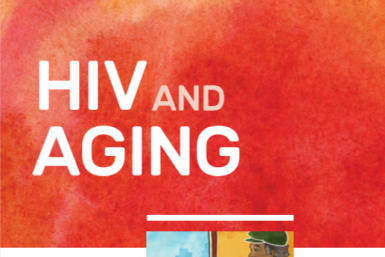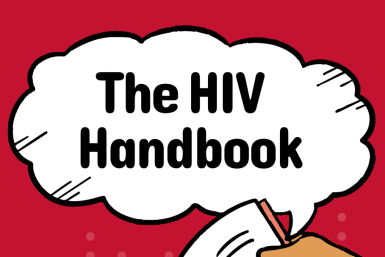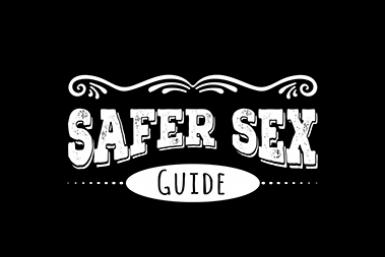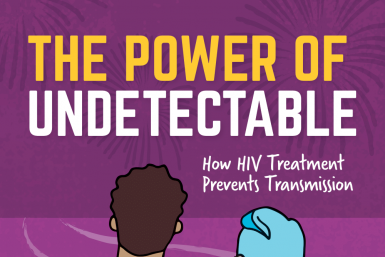- If you inject drugs and share needles or other equipment, maintaining an undetectable viral load lowers the chance of passing HIV.
 This booklet is for people 50 or older who are living with HIV, as well as their partners, family members and caregivers. It looks at some of the issues that older adults living with HIV might face…
This booklet is for people 50 or older who are living with HIV, as well as their partners, family members and caregivers. It looks at some of the issues that older adults living with HIV might face…
 Core information for service providers about HIV, including transmission, epidemiology, health equity, testing, prevention and treatment.
Core information for service providers about HIV, including transmission, epidemiology, health equity, testing, prevention and treatment.- Maintaining an undetectable viral load is just one of many ways to prevent HIV. Here are some other highly effective ways that you, your sex partners and the people you use drugs with can prevent HIV:
- HIV viral load refers to the amount of HIV in the blood of a person living with HIV. If you take HIV treatment consistently as prescribed by your doctor, you can reduce your viral load to a level too…
- The Public Health Agency of Canada publishes estimates that help us understand the epidemiology of HIV in Canada. As of 2022, it is estimated that there were 65,270 people living with HIV in Canada (…
 This resource explores how to make sex safer and gives tips on preventing sexually transmitted infections (STIs). The guide looks at risks based on the type of sex people are having and provides…
This resource explores how to make sex safer and gives tips on preventing sexually transmitted infections (STIs). The guide looks at risks based on the type of sex people are having and provides… An easy-to-read primer for individuals who are newly diagnosed with HIV. This concise guide contains basic information on HIV, treatment, how to stay healthy and avoid passing HIV to others,…
An easy-to-read primer for individuals who are newly diagnosed with HIV. This concise guide contains basic information on HIV, treatment, how to stay healthy and avoid passing HIV to others,…- If you are pregnant, or you want to have a child, HIV treatment can allow you to have an HIV-negative baby. If you start HIV treatment before pregnancy and maintain an undetectable viral load…
- When you maintain an undetectable viral load, you cannot pass HIV to the people you have sex with. This is true no matter what kinds of sex you are having, and no matter your gender or sexual…
 This resource explains how taking HIV medications and maintaining an undetectable viral load can prevent HIV transmission.
This resource explains how taking HIV medications and maintaining an undetectable viral load can prevent HIV transmission.
-
Essentials
-
-
-
-
Statistics
-
Government and community strategies
-
Menu Callout TitleEssentials
Menu Callout BodyBackground information on HIV, hepatitis C and STIs in Canada, including basic information, statistics (epidemiology), provincial and national strategies to address HIV, hepatitis C and STIs, and social determinants of health.
-
-
Prevention
-
How transmission occurs
-
Prevention methods
-
-
Safer sex
-
Harm reduction
-
-
Menu Callout TitlePrevention
Menu Callout BodyInformation on HIV and hepatitis C transmission and prevention, including STIs and safer sex, harm reduction, pregnancy and infant feeding, and microbicides and vaccines.
-
-
Testing & DiagnosisMenu Callout Title
Testing and diagnosis
Menu Callout BodyInformation on diagnostic tests for HIV, hepatitis C and STIs; the delivery of testing and counselling; and resources for people who are newly diagnosed.
-
Treatment & Care
-
HIV treatment, care and support
-
Hepatitis C treatment, care and support
-
Menu Callout TitleTreatment and care
Menu Callout BodyInformation on treatment, care and support for HIV, hepatitis C and STIs, including medications, healthy living, pregnancy and infant feeding, hepatitis C re-infection, and long-term health issues.
-
-
Education, Publications & Websites
-
Education
-
Order a publication
-
Service provider publications
-
Client publications
-
Websites
Menu Callout TitleEducation, publication and websites
Menu Callout BodyCATIE’s online educational courses, webinars, online and print publications, and other websites.
-
-
About CATIE
-
What we do
-
Governance
-
Supporting our work
-
Menu Callout TitleAbout CATIE
Menu Callout BodyCATIE strengthens Canada’s response to HIV and hepatitis C by bridging research and practice. We connect healthcare and community-based service providers with the latest science, and promote good practices for prevention and treatment programs.
-
